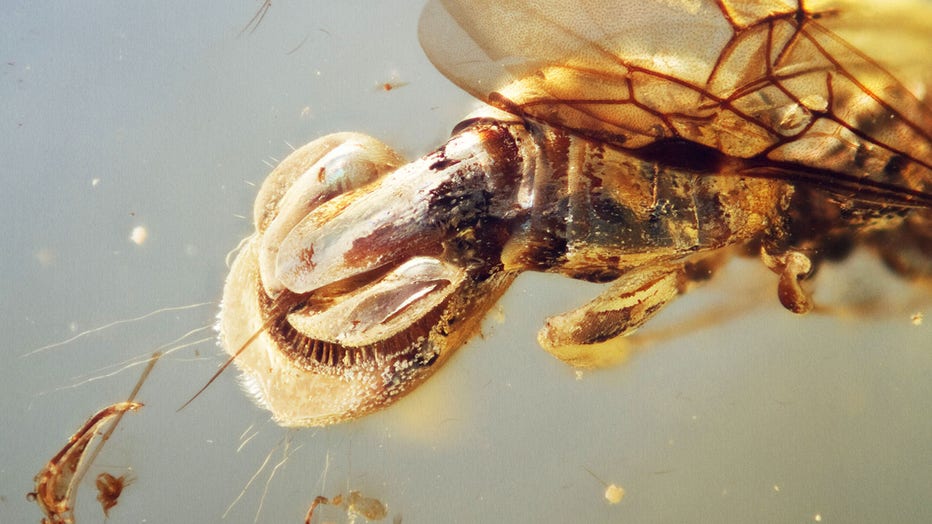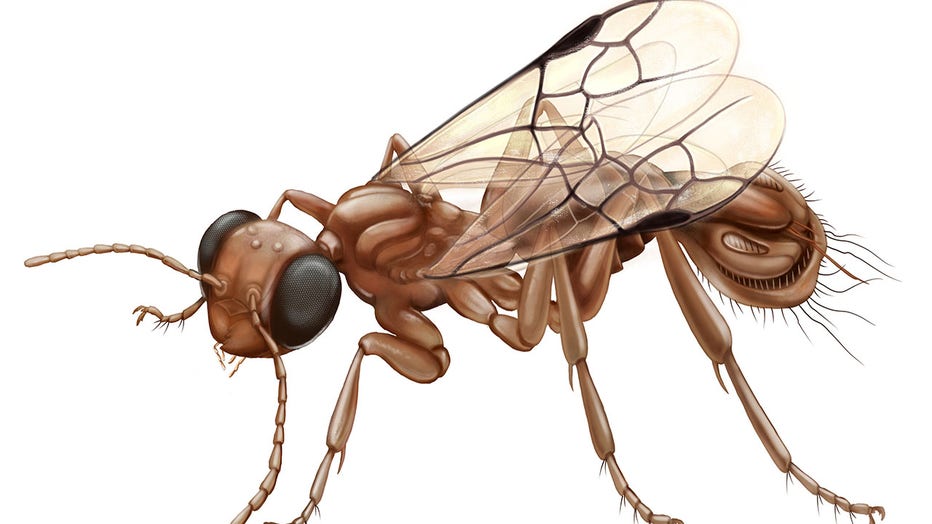Dinosaur-era wasp may have snatched its prey: ‘Truly fascinating’
Holotype of Sirenobethylus charybdis (Credit: Dr. Qiong Wu)
BEIJING - An ancient wasp species, believed to have lived alongside the dinosaurs, was found preserved in 99-million-year-old amber from northern Myanmar, scientists in Beijing, China reported.
Now, the researchers are analyzing the species, named Sirenobethylus charybdis, which exhibits an extraordinary feature: a body structure resembling that of a Venus flytrap, an iconic carnivorous plant.
The findings were published Thursday in the journal BMC Biology.
Ancient wasp preserved in amber is studied
What they're saying:
Dr. Taiping GAO, a lead researcher on the study, told FOX TV Stations that the first discovery of this amber specimen occurred more than a decade ago, but at the time, the researchers assumed its structure had been deformed during preservation.
"Over the years, we found more than ten similar amber pieces, confirming that this was not a deformation," GAO told FOX. "This raised our curiosity – what was the function of this intricate and complex structure? That question led us to conduct further research."

Abdominal terminal of the specimen displaying the grasping apparatus (Credit: Dr. Qiong Wu)
Researchers suggested the flytrap-like structure was used to hold a wriggly insect still while the wasp laid an egg, depositing a baby wasp to feed on and drain its new host.
"The discovery was truly fascinating!," GAO continued. "It provided key insights into the prey capture strategies of early parasitoid wasps, shedding light on their diverse parasitic behaviors in deep time. Finding direct fossil evidence of such a sophisticated mechanism challenges our previous understanding of parasitoid evolution and suggests that these insects developed complex host-handling adaptations much earlier than expected. It’s exciting to see how ancient parasitoids might have been just as specialized and efficient as their modern counterparts!"

Reconstruction of Sirenobethylus charybdis (Credit: Ms. Xiaoran Zuo)
It's unclear when the wasp went extinct. Studying unusual insects like this one can help scientists understand what insects are capable of and how different they can be.
RELATED: Animal rarely seen off North Carolina coast spotted for first time in 5 years
"I hope readers take away a deeper appreciation for the complexity and diversity of parasitoid wasps, even in deep time," GAO added. This discovery highlights how ancient insects had already evolved sophisticated prey capture strategies, challenging our understanding of parasitoid evolution. It also underscores the importance of fossils in revealing behaviors that might otherwise be lost to history."
What's next:
In the future, the researchers hope to explore the behavior and unique adaptations of Mesozoic parasitoid wasps to gain deeper insights into their survival strategies.
The Source: The information for this story was provided by the study "A cretaceous fly trap? remarkable abdominal modification in a fossil wasp" published on March 27, 2025. The Associated Press contributed. This story was reported from Los Angeles.

